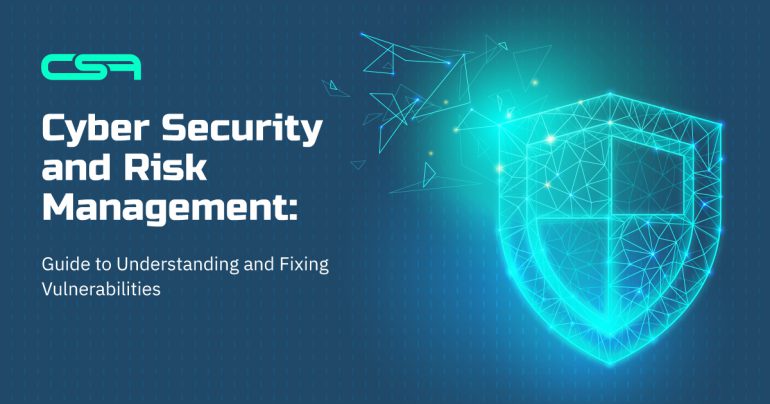

You are probably familiar with the “risk management” term and have even implemented it in your personal routine. Risk management helps you to stay out of financial losses and enables you to ensure a clean exit of unexpected errors. For example, doors and locks protect you from ‘unannounced guests’, while vaults keep your possessions in one place. So there are lots of items that are dedicated to saving us from physical robbery, but what about digital?
Despite the fact that the Internet has become an open and inclusive space with a tone of opportunities, it is an enormous, obviously insecure, and sensitive data center. This fact may become the most ruinous to any business operating on the Internet. However, business owners can get around and protect themselves from data theft, reputation damage, and compromising systems of their companies by providing Cybersecurity Risk Management.
Cybersecurity risk management is a process of practicing and implementing various defensive cybersecurity measures, techniques, and tactics in order to find vulnerability points, minimize or exclude data breaches, frauds, and cyber extortion.
As a matter of fact, cyber risk can be identified and calculated. To make your cybersecurity risk management more substantial, we provide you with a formula for measuring the value of cyber risk:

These components tend to be flexible and depend on many variables that are often difficult to measure quantitatively. We suggest sorting out what exactly each of the components means.
Consequences of attack can be represented as a number of lost users, stolen data, or/and any other misfortune that would greatly affect your business objectives.
The likelihood of an attack is a collection of variables such as the attractiveness of an asset to attackers, the vulnerabilities present in the asset.
So, for example, you may determine that the possibility of occurrence is 50% for a given period of time and that the impact of an occurrence will cost you $150,000.
This formula doesn’t show the precise result, but it is the closest way to represent the quantitative value of cyber risk.
Developing and implementing risk management in your corporate culture requires thorough preparation and analysis. But before starting out you should determine and prioritize the assets which you want to protect. That will help you to construct a sustainable risk management framework that will focus on protecting the right assets from vulnerabilities specific to them. By defining them you should be able to continue working on the implementation of the risk management framework.
In order to protect the most valuable assets, your organization should first identify and assess risks as well as to conduct plans on how to prevent them. Most enterprises start their risk management by determining the extent of potential threats and vulnerabilities.
Operational risk is one of the most common among small and medium businesses. Operational risk is the risk of failure or waste resulting from defective or inadequate processes, people, or systems. Due to the risk management methodology, there are two kinds of events that can affect the operational risk – external and internal. Internal events list social engineering, insider breach, and misconduct. External events list cyber-attacks, drastic changes in the market, new technologies, new laws, etc.
When you already know how to identify the risks, it’s time to consider the ways to manage them.

You may change your plan to eliminate the risk. This is the best choice for preventing risks that have a devastating impact on the company.
Applicable for projects that have more than two parties. Mostly include insurance. This methodology is also known as “risk-sharing”.
“Risk optimization” or “reduction”. This approach is aimed at lowering the impact of an inevitable risk to better cope with it.
Some risks can be good. For example, if a product is too popular, and you need more working hands, you may employ new staff.
It’s necessary for your employees to be aware of your cybersecurity policy and know the rules of preventing data breaches. It will save you from lots of human errors and potential hacking exploits.
However, one of the best approaches that could save a company from unexpected errors, threats, and losses is reaching out to a competent cybersecurity company. Experts may not only test your level of cybersecurity but also define security gaps and get rid of them. Cyber Security Adviser specializes in finding the perfect cybersecurity company that will assess and cope with your risks like no one else. Just contact us!